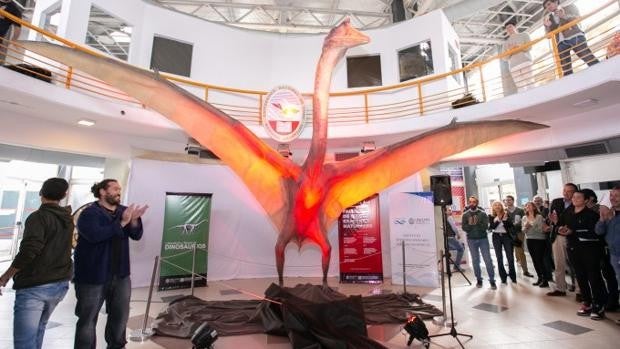 Local paleontologists have discovered fossils of the largest pterosaur ever discovered in South America in the Argentine province of Mendoza.
Local paleontologists have discovered fossils of the largest pterosaur ever discovered in South America in the Argentine province of Mendoza.
The bones of this flying reptile, which has been called Thanatosdrakon amaru - or 'Dragon of Death' - were found during civil works in rocks from the Cretaceous Period, estimated to be 86 million years old.
The remains, which are exceptionally preserved, belong to the axial skeleton (vertebrae) and the appendicular skeleton (bones of the forelimbs and hindlimbs) of two specimens.
"Pterosaurs (which are actually flying reptiles) were a very unique group of animals that lived from the Triassic to the Cretaceous and represent the first vertebrates to acquire the ability to actively fly. They are often confused with dinosaurs, a closely related group," said Dr. Leonardo Ortiz, head of the excavation, in a statement.
After years of research, the team was able to determine that the remains correspond to a new species of pterosaur because the bones exhibit unique characteristics never before seen in other pterosaurs in the world.
One notable aspect of the Thanatosdrakon is the size of its bones, which demonstrate that it is a giant specimen; in fact, it is the largest pterosaur in South America and one of the largest in the world. The largest specimen has a wingspan of approximately 9 meters, and the smallest, approximately 7 meters.
Where did they come from?
Pterosaurs are considered the first flying reptiles. They dominated the skies for 150 million years before becoming extinct along with the dinosaurs around 66 million years ago. However, their origin remains a matter of debate among paleontologists.
In December 2020, researchers from Virginia Polytechnic Institute and State University (USA) attempted to shed light in the journal Nature by identifying the closest relatives of pterosaurs, a group of "dinosaur precursors" called lagerpetids.
